
Sembawang: Singapore's Hidden Gem of History and Nature
Discover Sembawang: A serene escape in Singapore offering lush parks, historic landmarks, and delicious local cuisine. Perfect for nature lovers and history buffs alike.
Sembawang, located in the northern part of Singapore, is a charming district that offers a unique blend of history, nature, and local culture. Unlike the bustling city center, Sembawang provides a more laid-back and serene atmosphere, perfect for tourists looking to escape the fast pace of urban life. The area is rich in history, with many remnants from Singapore's colonial past, including the iconic Sembawang Shipyard and the historic Beaulieu House. As you stroll through the district, you'll find that Sembawang's past is beautifully intertwined with its present, offering a glimpse into the country's diverse heritage. One of the highlights of Sembawang is its lush greenery and natural landscapes. Sembawang Park is a must-visit for nature lovers, offering stunning views of the Johor Strait and a serene beach where you can relax and unwind. The park is also home to a variety of flora and fauna, making it a great spot for picnics, bird-watching, and leisurely walks. Nearby, the Sembawang Hot Spring Park provides a unique experience where you can soak your feet in natural hot spring water, a rare find in Singapore. For food enthusiasts, Sembawang offers a delightful array of local eateries and hawker centers where you can savor authentic Singaporean dishes. From the famous white bee hoon at Sembawang Traditional Claypot Rice to the delectable treats at Chong Pang Market & Food Centre, your taste buds are in for a treat. The area also has several quaint cafes and restaurants, making it a great place to explore Singapore's culinary scene. Sembawang is not just about nature and food; it also has a vibrant community with various cultural and recreational activities. The Sembawang Community Club often hosts events and workshops that provide a deeper understanding of local traditions and practices. Whether you're interested in outdoor adventures, historical exploration, or simply enjoying local cuisine, Sembawang has something to offer every traveler.
Local tips in Sembawang
- Visit Sembawang Park early in the morning or late afternoon to avoid the midday heat and enjoy a peaceful stroll.
- Bring a towel and a change of clothes if you plan to visit the Sembawang Hot Spring Park, as you might get wet.
- Try the local dishes at Chong Pang Market & Food Centre for an authentic Singaporean culinary experience.
- Check out the events at Sembawang Community Club to immerse yourself in local culture and activities.
- Wear comfortable walking shoes as many attractions in Sembawang are best explored on foot.
Sembawang: Singapore's Hidden Gem of History and Nature
Sembawang, located in the northern part of Singapore, is a charming district that offers a unique blend of history, nature, and local culture. Unlike the bustling city center, Sembawang provides a more laid-back and serene atmosphere, perfect for tourists looking to escape the fast pace of urban life. The area is rich in history, with many remnants from Singapore's colonial past, including the iconic Sembawang Shipyard and the historic Beaulieu House. As you stroll through the district, you'll find that Sembawang's past is beautifully intertwined with its present, offering a glimpse into the country's diverse heritage. One of the highlights of Sembawang is its lush greenery and natural landscapes. Sembawang Park is a must-visit for nature lovers, offering stunning views of the Johor Strait and a serene beach where you can relax and unwind. The park is also home to a variety of flora and fauna, making it a great spot for picnics, bird-watching, and leisurely walks. Nearby, the Sembawang Hot Spring Park provides a unique experience where you can soak your feet in natural hot spring water, a rare find in Singapore. For food enthusiasts, Sembawang offers a delightful array of local eateries and hawker centers where you can savor authentic Singaporean dishes. From the famous white bee hoon at Sembawang Traditional Claypot Rice to the delectable treats at Chong Pang Market & Food Centre, your taste buds are in for a treat. The area also has several quaint cafes and restaurants, making it a great place to explore Singapore's culinary scene. Sembawang is not just about nature and food; it also has a vibrant community with various cultural and recreational activities. The Sembawang Community Club often hosts events and workshops that provide a deeper understanding of local traditions and practices. Whether you're interested in outdoor adventures, historical exploration, or simply enjoying local cuisine, Sembawang has something to offer every traveler.
When is the best time to go to Sembawang?
Iconic landmarks you can’t miss
Sembawang Park
Experience the serene beauty and historical charm of Sembawang Park, a perfect retreat for nature lovers and history enthusiasts in Singapore.

White Restaurant (Jalan Tampang)
Experience the essence of authentic Chinese cuisine at White Restaurant, your go-to destination in Sembawang for delightful meals and warm hospitality.

Sembawang Hot Spring Park
Discover the tranquility of Sembawang Hot Spring Park, an oasis of natural hot springs and lush greenery in Singapore, perfect for relaxation and rejuvenation.

D' Rubinah Restaurant
Discover the flavors of Singapore at D' Rubinah Restaurant, where every bite tells a story of culinary heritage and local tradition.

Bukit Canberra Hawker Centre
Experience the vibrant flavors of Singapore at Bukit Canberra Hawker Centre, a culinary hotspot offering diverse local delights in a lively atmosphere.

Yishun Dam
Discover Yishun Dam: Singapore's scenic gem for tranquil walks, stunning sunsets, and a perfect escape into nature's embrace.

Sembawang Traditional Claypot Rice
Experience authentic Chinese claypot rice in Sembawang, Singapore, where tradition meets flavor in a cozy dining atmosphere.

Canberra Park
Explore Canberra Park: A tranquil urban oasis in Sembawang, Singapore, perfect for relaxation, recreation, and family fun amidst vibrant nature.
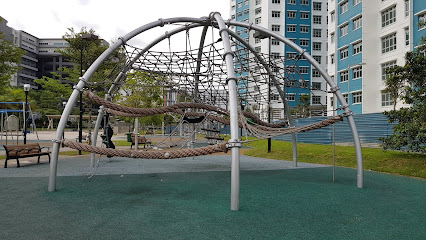
1036 Live Seafood
Experience the best of Singapore's seafood at 1036 Live Seafood, where freshness meets flavor in a vibrant dining atmosphere.
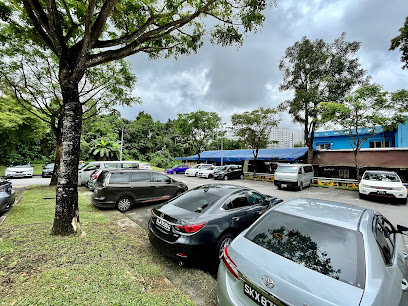
Live Turtle Museum (Singapore)
Explore the Live Turtle Museum in Singapore, a unique attraction showcasing diverse turtle species and promoting wildlife conservation efforts.
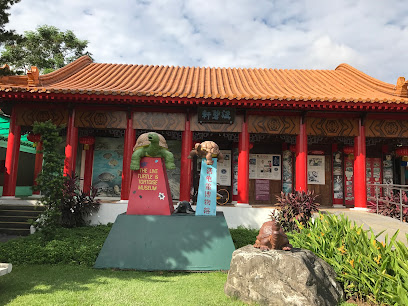
Sembawang Country Club
Explore Sembawang Country Club, Singapore’s premier destination for golf, dining, and family-friendly amusement in a tranquil setting.

Beaulieu House (Sembawang Seafood Paradise)
Experience the best of Chinese and Western cuisine at Beaulieu House, a scenic dining spot in Sembawang Park, Singapore.

Woody Family Cafe
Experience culinary delight at Woody Family Cafe, where Asian fusion meets Western flavors in the heart of Sembawang, Singapore.

Boulder Planet Sembawang
Experience the thrill of rock climbing at Boulder Planet in Sembawang, Singapore - a perfect destination for adventure seekers and climbing enthusiasts.
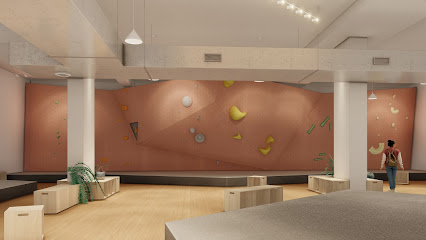
Leaf Corner Sembawang Vegetarian 慈素餐馆
Discover Leaf Corner in Sembawang: a cozy vegetarian restaurant offering a diverse menu of delicious and healthy plant-based dishes.

Unmissable attractions to see
Singapore Zoo
Experience the captivating wildlife of Singapore Zoo, a top tourist attraction nestled in lush greenery with immersive exhibits and engaging animal encounters.

Night Safari
Experience the thrill of nocturnal wildlife at Singapore's Night Safari, an unforgettable journey through nature's nighttime wonders.

LEGOLAND Malaysia
Experience the wonder of LEGOLAND Malaysia, where adventure meets creativity in a vibrant theme park designed for families and LEGO enthusiasts!

Johor Zoo
Discover Johor Zoo, a family-friendly destination in Johor Bahru showcasing diverse wildlife and conservation efforts amidst lush greenery.

Changi Beach Park
Discover the serene beauty and recreational opportunities at Changi Beach Park, Singapore's coastal paradise perfect for relaxation and adventure.

Bird Paradise
Experience the wonder of avian life at Bird Paradise, Singapore's premier wildlife park featuring thousands of birds in a breathtaking natural setting.

J2 Terrarium | J2 Studio & Workshop
Discover the art of terrarium crafting at J2 Terrarium in Singapore, where creativity meets nature in a serene workshop setting.

Woodlands Waterfront Park
Experience the tranquility and scenic beauty of Woodlands Waterfront Park, a must-visit destination in Singapore for nature lovers and outdoor enthusiasts.

Desaru Fruit Farm
Experience the lush landscapes and vibrant flavors of Desaru Fruit Farm in Johor, Malaysia—an adventure for all ages filled with fruits, fun, and local cuisine.

Punggol Park
Experience the natural beauty and tranquility of Punggol Park, a serene retreat in Singapore's vibrant urban landscape.

Punggol Waterway Park
Discover the beauty of Punggol Waterway Park, a serene escape featuring scenic views, recreational activities, and lush greenery in Singapore.
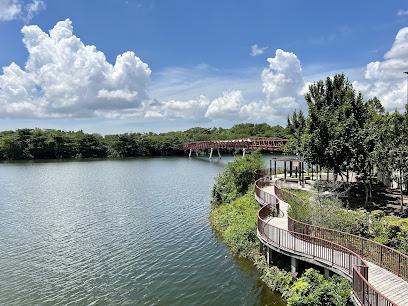
Lower Seletar Reservoir Park
Explore the tranquil Lower Seletar Reservoir Park, a serene nature preserve in Singapore perfect for relaxation, outdoor activities, and stunning vistas.

Kota Tinggi Firefly Park
Experience the magical spectacle of fireflies at Kota Tinggi Firefly Park, a serene riverside attraction in Johor, Malaysia.
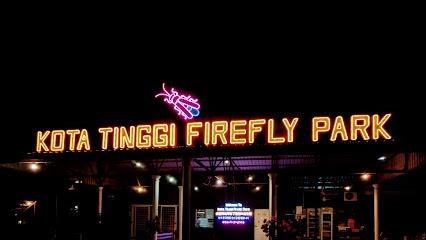
Tanjong Puteri Golf and Resort
Discover the ultimate blend of golf, dining, and relaxation at Tanjong Puteri Golf and Resort in Pasir Gudang, Johor.

Sultan Abu Bakar Mosque
Explore the architectural beauty and serene atmosphere of Sultan Abu Bakar Mosque, a landmark in Johor Bahru showcasing Islamic art and culture.

Essential places to dine
White Restaurant (Jalan Tampang)
Experience authentic Chinese flavors at White Restaurant in Sembawang, Singapore – where culinary excellence meets warm hospitality.

D' Rubinah Restaurant
Experience authentic Singaporean cuisine at D' Rubinah Restaurant in Sembawang - where flavor meets affordability.

Pot Addiction Korean BBQ & Hotpot | Sun Plaza
Experience an unforgettable buffet journey at Pot Addiction Korean BBQ & Hotpot in Sun Plaza – where flavors meet fun!

NOSH @ Sembawang
Experience the vibrant flavors of Singapore at NOSH @ Sembawang – where culinary creativity meets cozy bistro charm.

Sembawang Traditional Claypot Rice
Experience authentic claypot rice at Sembawang Traditional Claypot Rice - a culinary delight in Singapore's vibrant food scene.
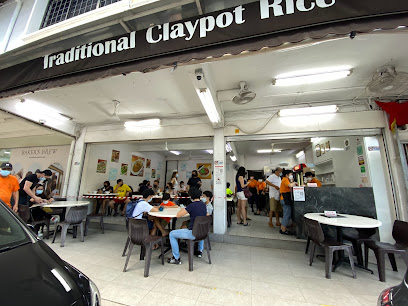
White Restaurant (Sun Plaza)
Experience authentic Chinese cuisine at White Restaurant in Sun Plaza, Singapore - a culinary delight awaits every visitor.
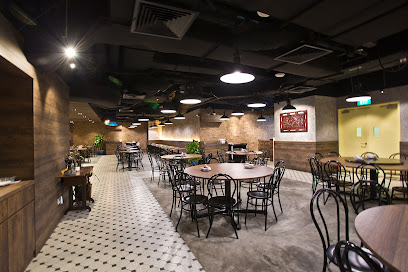
1036 Live Seafood
Experience exquisite seafood delights at 1036 Live Seafood in Sembawang - where freshness meets culinary excellence.

Al Heera Restaurant
Discover the flavors of Halal cuisine at Al Heera Restaurant, where delicious breakfasts meet affordability in vibrant Mandai, Singapore.

Beaulieu House (Sembawang Seafood Paradise)
Discover Beaulieu House: A unique dining experience blending history with exquisite Chinese and Western cuisine amid scenic waterfront views.

Woody Family Cafe
Discover Woody Family Cafe in Sembawang - where Asian flavors meet Western classics in a family-friendly setting.

Charcoal Mookata 1018 Sembawang - The Addiction Bistro
Discover the authentic Thai mookata experience at Charcoal Mookata - The Addiction Bistro in Sembawang, Singapore.

The Patio SG
Experience delightful dining at The Patio SG – your go-to destination for delicious food and refreshing drinks in Singapore's vibrant Sembawang district.

The Famous Kitchen
Experience authentic Chinese flavors at The Famous Kitchen, where family dining meets exceptional seafood delights in the heart of Singapore.

ASTONS Specialities
Indulge in premium steaks and delightful dishes at ASTONS Specialities in Sembawang Shopping Centre, Singapore's go-to steakhouse.

A&W Canberra Plaza
Experience nostalgic flavors at A&W Canberra Plaza - home of iconic burgers and root beer floats in Singapore.

Markets, malls and hidden boutiques
Sun Plaza
Experience the best of shopping, dining, and entertainment at Sun Plaza, a vibrant mall in Singapore's Sembawang district.

Sembawang Shopping Centre
Discover the eclectic charm and vibrant atmosphere of Sembawang Shopping Centre, a shopper's paradise in Singapore's Sembawang district.

Sembawang Lighting House Pte Ltd
Discover a world of innovative lighting solutions at Sembawang Lighting House, where style meets functionality in Singapore's premier lighting store.

DAISO & THREEPPY @ Sembawang Shopping Centre
Shop unique and affordable treasures at Daiso & THREEPPY in Sembawang Shopping Centre, Singapore's go-to variety store for budget-friendly finds.

FairPrice
Explore the vibrant offerings of FairPrice Supermarket, your one-stop destination for local and international groceries in Singapore.

Giant Hypermarket
Discover the diverse offerings at Giant Hypermarket, Sembawang's premier shopping destination for groceries, local snacks, and more.

Decathlon - Sun Plaza (2Hrs Click & Collect)
Explore Decathlon at Sun Plaza for a wide range of affordable sporting goods in Singapore, catering to all fitness enthusiasts and outdoor adventurers.

Sembawang Mart
Explore the vibrant flavors and local culture at Sembawang Mart, your go-to grocery store and shopping destination in Singapore.

FairPrice Sembawang Way
Explore a variety of local snacks and essentials at FairPrice Sembawang Way, Singapore's go-to supermarket for tourists.

MoneyMax Pawnshop
Explore MoneyMax Pawnshop in Sembawang for exquisite jewelry and reliable pawn services, a must-visit for tourists seeking unique treasures.

The Mattress Boutique - Gambas
Discover unparalleled comfort and style at The Mattress Boutique - Gambas in Singapore, your ultimate destination for premium mattresses and bedroom furniture.

Giant Express
Discover the vibrant offerings of Giant Express, Singapore's supermarket, and immerse yourself in local culinary delights and daily essentials.
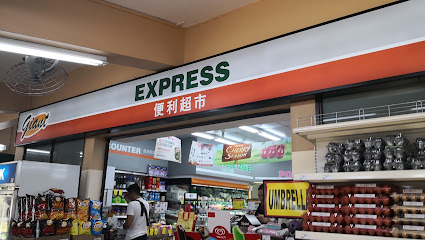
Cheap John's Enterprise (sembawang)
Discover Singapore's cycling scene at Cheap John's Enterprise, where quality bikes and friendly service await every cycling enthusiast.
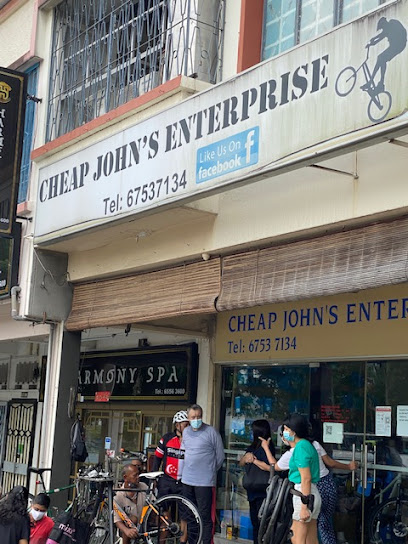
Prime Supermarket
Explore the local flavors and essentials at Prime Supermarket, your go-to grocery store in Singapore for an authentic shopping experience.

Japan Home
Explore Japan Home in Sembawang: A treasure trove of Asian household goods, kitchen supplies, and unique decor at great prices.

Essential bars & hidden hideouts
The Carpenters Bar
Experience the vibrant atmosphere and delicious offerings at The Carpenters Bar, Singapore's perfect spot for relaxation and socializing.

The Patio SG
Discover The Patio SG, a perfect blend of relaxation and culinary delights in Singapore's Sembawang district.
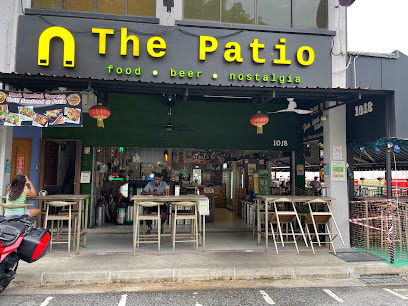
Flamingg Mangos
Discover the vibrant flavors of Flamingg Mangos in Sembawang, Singapore, where culinary delights and a lively atmosphere await every visitor.

Al Capone's Sembawang
Experience the vibrant charm of Al Capone's Sembawang, a lively diner in Singapore serving delicious comfort food in a retro atmosphere.

HaveFun Karaoke & Outdoor Beer Garden (SAFRA Yishun)
Discover a lively karaoke bar in Yishun with an outdoor beer garden, perfect for fun nights out and memorable gatherings with friends in Singapore.

The Cafe & Bar
Experience the vibrant atmosphere and delightful flavors at The Cafe & Bar, the perfect retreat in Sembawang for tourists and locals alike.

Vintage Pub
Discover the vibrant nightlife and inviting atmosphere of Vintage Pub in Sembawang, Singapore, where locals and tourists come together for unforgettable evenings.

Brew House Sports Bar
Experience the thrill of sports and the delight of diverse cuisine at Brew House Sports Bar in Singapore, where every visit is a celebration.

Ginza Pub
Experience the vibrant nightlife at Ginza Pub, Singapore's top karaoke bar with a lively atmosphere and a vast song selection.

Nelson Bar (Sembawang)
Discover the lively atmosphere of Nelson Bar in Sembawang, where exquisite drinks and local cuisine come together for an unforgettable night out.

Js Bar & Grill
Experience the rich flavors of grilled cuisine at Js Bar & Grill in Sembawang, Singapore—a must-visit for food lovers and social gatherings.
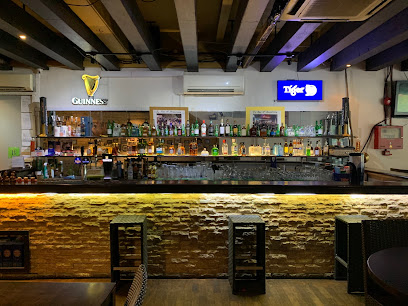
Famous Hangout
Experience the vibrant nightlife of Singapore at Famous Hangout, where exquisite drinks and delicious food create unforgettable memories.

Blue Heaven Bar
Experience the lively atmosphere and delicious offerings at Blue Heaven Bar in Sembawang, Singapore, a must-visit for every traveler.

Quah-q Pub
Discover Quah-q Pub, a lively Sembawang hotspot for great drinks, delicious food, and an unforgettable nightlife experience in Singapore.

Sem II
Discover the vibrant nightlife of Singapore at Sem II, a karaoke bar blending fun, darts, and a lively pub atmosphere for unforgettable evenings.

Local Phrases
-
- Hello你好
[Nǐ hǎo] - Goodbye再见
[Zài jiàn] - Yes是的
[Shì de] - No不
[Bù] - Please/You're welcome请
[Qǐng] - Thank you谢谢
[Xièxiè] - Excuse me/Sorry对不起
[Duìbùqǐ] - How are you?你好吗?
[Nǐ hǎo ma?] - Fine. And you?很好,你呢?
[Hěn hǎo, nǐ ne?] - Do you speak English?你会说英语吗?
[Nǐ huì shuō yīngyǔ ma?] - I don't understand我不明白
[Wǒ bù míngbái]
- Hello你好
-
- I'd like to see the menu, please请给我看菜单
[Qǐng gěi wǒ kàn càidān] - I don't eat meat我不吃肉
[Wǒ bù chī ròu] - Cheers!干杯!
[Gān bēi!] - I would like to pay, please我要付款,请
[Wǒ yào fùkuǎn, qǐng]
- I'd like to see the menu, please请给我看菜单
-
- Help!帮帮忙!
[Bāng bāngmáng!] - Go away!走开!
[Zǒu kāi!] - Call the Police!叫警察!
[Jiào jǐngchá!] - Call a doctor!叫医生!
[Jiào yīshēng!] - I'm lost我迷路了
[Wǒ mílùle] - I'm ill我生病了
[Wǒ shēngbìngle]
- Help!帮帮忙!
-
- I'd like to buy...我想买...
[Wǒ xiǎng mǎi...] - I'm just looking我只是看看
[Wǒ zhǐshì kàn kàn] - How much is it?这个多少钱?
[Zhège duōshǎo qián?] - That's too expensive太贵了
[Tài guìle] - Can you lower the price?可以便宜点吗?
[Kěyǐ piányi diǎn ma?]
- I'd like to buy...我想买...
-
- What time is it?现在几点了?
[Xiànzài jǐ diǎnle?] - It's one o'clock一点了
[Yī diǎnle] - Half past (10)十点半
[Shí diǎn bàn] - Morning早上
[Zǎoshang] - Afternoon下午
[Xiàwǔ] - Evening晚上
[Wǎnshàng] - Yesterday昨天
[Zuótiān] - Today今天
[Jīntiān] - Tomorrow明天
[Míngtiān] - 1一
[Yī] - 2二
[Èr] - 3三
[Sān] - 4四
[Sì] - 5五
[Wǔ] - 6六
[Liù] - 7七
[Qī] - 8八
[Bā] - 9九
[Jiǔ] - 10十
[Shí]
- What time is it?现在几点了?
-
- Where's a/the...?...在哪里?
[...Zài nǎlǐ?] - What's the address?地址是什么?
[Dìzhǐ shì shénme?] - Can you show me (on the map)?你可以给我看地图吗?
[Nǐ kěyǐ gěi wǒ kàn dìtú ma?] - When's the next (bus)?下一班是什么时候?
[Xià yī bān shì shénme shíhòu?] - A ticket (to ....)一张票(到....)
[Yī zhāng piào (dào....)]
- Where's a/the...?...在哪里?
History of Sembawang
-
Before modern development, the area now known as Sembawang was home to indigenous Malay fishing communities. The coastal mangroves and lush forests provided abundant resources, and early settlers lived in harmony with the natural environment. The name 'Sembawang' is believed to be derived from the Sembawang tree, which was once commonly found in the area.
-
Sembawang gained strategic importance during the British colonial period when it became the site of a major naval base. Established in the 1920s, the Sembawang Naval Base was one of the largest British naval installations in the region. It played a crucial role during World War II and was a focal point of military activity in the Pacific. The base included extensive ship repair facilities and housed a large community of British military personnel and their families.
-
During World War II, Sembawang was occupied by Japanese forces following the fall of Singapore in 1942. The naval base was taken over and used for Japanese military operations. This period was marked by hardship and fear for the local population, as the Japanese imposed strict control and utilized the base for their war efforts. The occupation left a lasting impact on the community and infrastructure.
-
After the end of World War II, Sembawang underwent significant changes. The British resumed control of the naval base, but its strategic importance diminished with the decline of the British Empire. In the late 1960s, the British began to withdraw their military presence from Singapore. The naval base was eventually handed over to the Singaporean government and was repurposed for civilian use, marking a new chapter in Sembawang's history.
-
In recent decades, Sembawang has transformed into a residential and industrial area while preserving its historical heritage. The Sembawang Shipyard continues the area's maritime legacy, providing ship repair and maintenance services. Meanwhile, the old British colonial buildings have been repurposed for various uses, including residential housing and community spaces. Sembawang Park, a popular recreational area, offers a glimpse into the area's natural beauty and historical significance. The park's iconic Beaulieu House, once a British officers' mess, now serves as a heritage restaurant.
-
Sembawang is a melting pot of cultures, reflecting Singapore's multicultural identity. The area is home to a diverse population, including Chinese, Malay, Indian, and expatriate communities. This cultural diversity is celebrated through various festivals, community events, and places of worship. Landmarks such as the Sembawang Hot Spring Park, a unique natural hot spring, and the Chong Pang Market, a bustling local market, highlight the vibrant community life in Sembawang.
Sembawang Essentials
-
Sembawang is located in the northern part of Singapore. The nearest international airport is Changi Airport, which is approximately 25 kilometers away. From Changi Airport, you can take a taxi or use public transport to reach Sembawang. The journey typically takes around 30-45 minutes by taxi or about 1 hour by MRT (Mass Rapid Transit) with a transfer at Bishan or Yishun MRT stations.
-
Sembawang is well-connected by public transport. The Sembawang MRT station on the North-South Line provides easy access to other parts of Singapore. Local buses also serve the area extensively. For more flexibility, you can use ride-hailing services like Grab or Gojek. Renting a bicycle can also be a fun way to explore the area, especially with the scenic routes along the coast.
-
The official currency in Singapore is the Singapore Dollar (SGD). Credit cards are widely accepted in most hotels, restaurants, and shops. However, it is advisable to carry some cash for small purchases, especially in local markets and hawker centers. ATMs are readily available throughout Sembawang, and currency exchange services can be found at major shopping centers.
-
Sembawang is generally a very safe area for tourists. Singapore has low crime rates, but standard precautions are always advisable. Avoid leaving your belongings unattended and be cautious in crowded areas. There are no specific high-crime areas targeting tourists in Sembawang, but it's always best to stay vigilant and aware of your surroundings.
-
In case of an emergency, dial 999 for police assistance and 995 for medical emergencies. Sembawang has several medical clinics and a hospital nearby for urgent care. It is highly recommended to have travel insurance that covers medical emergencies. Pharmacies are also available for minor health issues and over-the-counter medications.
-
Fashion: Do dress comfortably and modestly, especially when visiting religious sites. Avoid overly revealing clothing. Religion: Do respect local customs and traditions. Remove your shoes before entering temples and mosques. Public Transport: Do be respectful and give up your seat to elderly passengers and those in need. Don't eat or drink on public transport. Greetings: Do greet people with a handshake or a slight nod. Avoid overly familiar gestures with strangers. Eating & Drinking: Do try local delicacies at hawker centers and food courts. Don't litter; use designated bins for waste disposal.
-
To experience Sembawang like a local, visit the Sembawang Hot Spring Park, a unique natural hot spring in Singapore. Explore the Sembawang Park and enjoy a picnic by the sea. Engage with locals at the Sembawang Mart or Sun Plaza for a taste of daily life. Don't miss the chance to try local dishes like Hainanese chicken rice and laksa at the nearby hawker centers.
Trending Landmark in Sembawang
-
Sembawang Park
-
White Restaurant (Jalan Tampang)
-
Sembawang Hot Spring Park
-
D' Rubinah Restaurant
-
Bukit Canberra Hawker Centre
-
Yishun Dam
-
Sembawang Traditional Claypot Rice
-
Canberra Park
-
1036 Live Seafood
-
Live Turtle Museum (Singapore)
-
Sembawang Country Club
-
Beaulieu House (Sembawang Seafood Paradise)
-
Woody Family Cafe
-
Boulder Planet Sembawang
-
Leaf Corner Sembawang Vegetarian 慈素餐馆
Nearby Cities to Sembawang
-
Things To Do in Yishun
-
Things To Do in Johor Bahru
-
Things To Do in Singapore
-
Things To Do in Bukit Timah
-
Things To Do in Orchard Road
-
Things To Do in Little India
-
Things To Do in Bugis
-
Things To Do in Clarke Quay
-
Things To Do in Jurong
-
Things To Do in Marina Bay
-
Things To Do in Chinatown
-
Things To Do in Tampines
-
Things To Do in East Coast Park
-
Things To Do in Sentosa
-
Things To Do in Malacca










